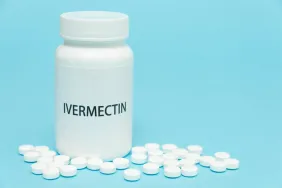Few dog owners are fortunate enough to avoid an eventual run-in with fleas, the most common dog parasites. Even with regular bathing and grooming, the tireless critters can find their way to the tender flesh of unsuspecting dogs (and dog owners). The bloodsuckers not only don’t pay rent, they cause itching and can transmit diseases to their hosts.
Happily, controlling fleas has become much simpler, safer, and more effective in the last few years. New products that break the flea’s reproductive cycle make it possible to keep the little biters at bay without exposing your dog to toxic chemicals.
Symptoms
Your dog’s continuous itching and scratching will probably be your first clue that he’s got fleas. If you look closely, you may actually see the little dark brown bugs. More likely, though, you’ll see what look like black and white specks. The black specks are “flea dirt,” or flea feces. The white specks are flea eggs. If you do see actual fleas, they won’t be easy to catch because they move fast and can jump farther than you’d think their tiny legs could take them.
If you think you’ve spotted some but aren’t quite sure, run a flea comb (a fine-toothed comb) over your dog’s back, groin area, haunches, and tail. These are the places fleas like most.
While some dogs experience nothing more than itching, others can develop flea allergy dermatitis. Heavy infestations can be serious enough to cause anemia. Some fleas carry diseases, such as typhus and tapeworm infections, that can be transmitted to your dog.
Flea basics
To really get rid of fleas, you have to disrupt their life cycle. Fleas thrive in moist, humid environments–that’s why they’re a much bigger problem in the summer than in winter.
An adult flea can live for four months on the body of a dog, but it’ll die in a couple of days without its canine host. After a nice meal of blood, fleas mate on the dog’s skin. The female can produce as many as 2,000 eggs during her short lifespan.
Those eggs fall off and hatch all over the house–in the carpet, on the couch, under the covers. Eventually those newly hatched fleas will need to find a host of their own, and the whole cycle starts all over again. So it’s not enough to kill the adult fleas; you have to get rid of all the eggs and larvae, too.
How to prevent fleas
New products are less toxic than older remedies and have made it easier to protect your dog from fleas. Some of these options can be pricey, but the upside is that they work.
- Three types of control. Different vets like to use different products for controlling fleas. The most popular choices generally include spot-ons, which are dabbed between a dog’s shoulder blades each month; pills, which are also effective for a month; and sprays for the yard, which can work for up to three months.
- What doesn’t work. It’s generally agreed that collars don’t work well, particularly pricey electronic flea collars. Products using only permethrin as the active ingredient usually don’t work well, because fleas have built up an immunity to this insecticide.
Widely used products
- Frontline Plus is a spot-on liquid that contains the active ingredients fipronil and S-methoprene. It kills fleas at all stages in their life cycle within 24 to 48 hours, and it’s waterproof.
- Advantage, a spot-on liquid that contains imidacloprid, kills fleas currently on the dog within 12 hours. It’s also waterproof.
- Revolution is a spot-on liquid that uses selamectin and is waterproof.
- K9 Advantix is a spot-on liquid that has imidacloprid and permethrin.
- Sentinel is a monthly pill that combines both a flea killer and a heartworm preventative.
- Program Tabs are monthly pills with lufenuron.
- Capstar with nitenpyram is a once-a-day pill.
If it’s not working
If, despite your best efforts, your dog’s still a flea magnet, here’s what you need to know to get rid of the infestation.
- Treat all your pets. If you have more than one animal in the house, you’ll have to treat them all to be truly rid of fleas.
- Treat your house. Foggers and sprays are an effective way to control fleas indoors. Most experts recommend sprays, because foggers can miss crevices where fleas hide. Choose only safe, nontoxic insecticidal sprays for indoor use. It’s also a good idea to vacuum thoroughly each week, being sure to get under cushions–a favorite flea hideout.
- Treat your yard. If you think your yard is where the fleas are coming from, you’ll need to treat it, too, with a spray product that kills fleas but is safe for pets and people.
When to go with the pros
Some of the effective flea control products are only available at a veterinarian‘s office. Those that are combined with heartworm preventive require a prescription.
Bottom line: Fleas are not only annoying, they can harm your dog’s health. By sticking to a regular flea control routine using the newest products, you can keep your dog comfortable and safe from most flea troubles.









